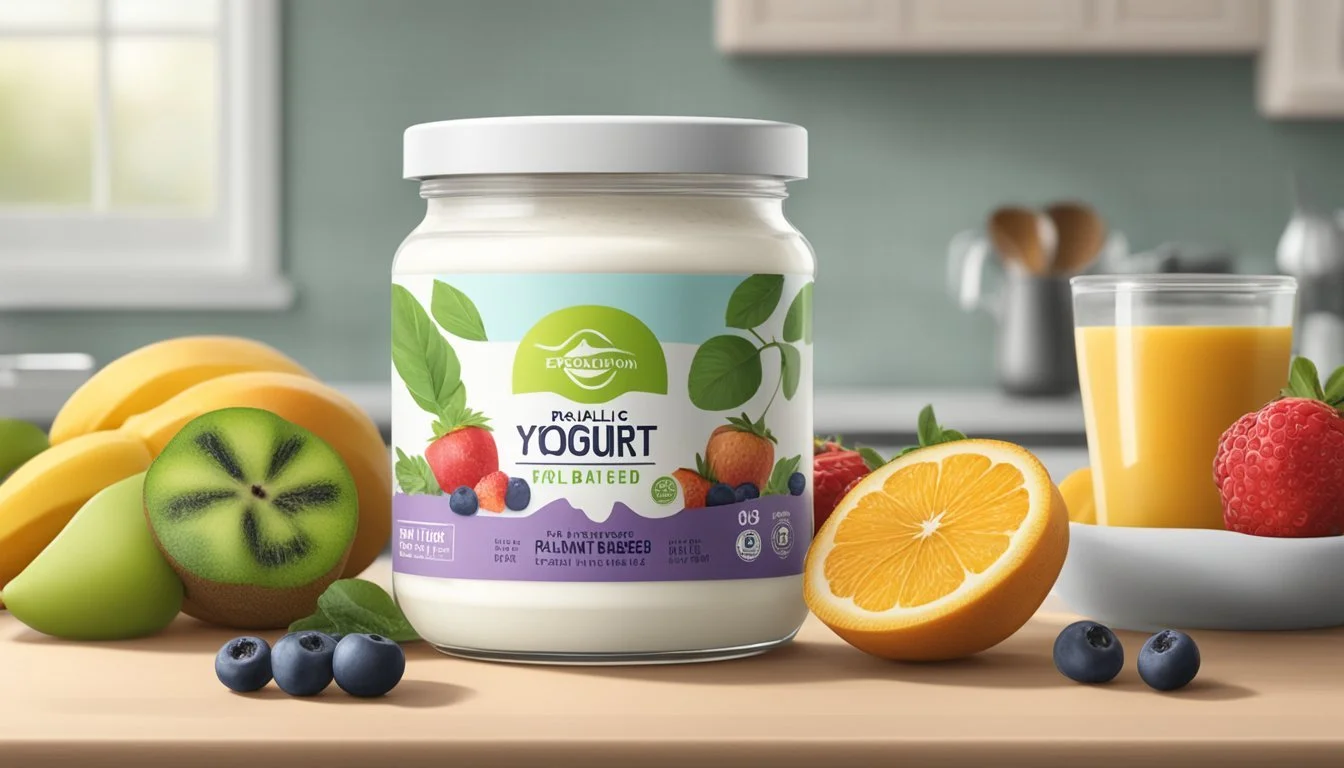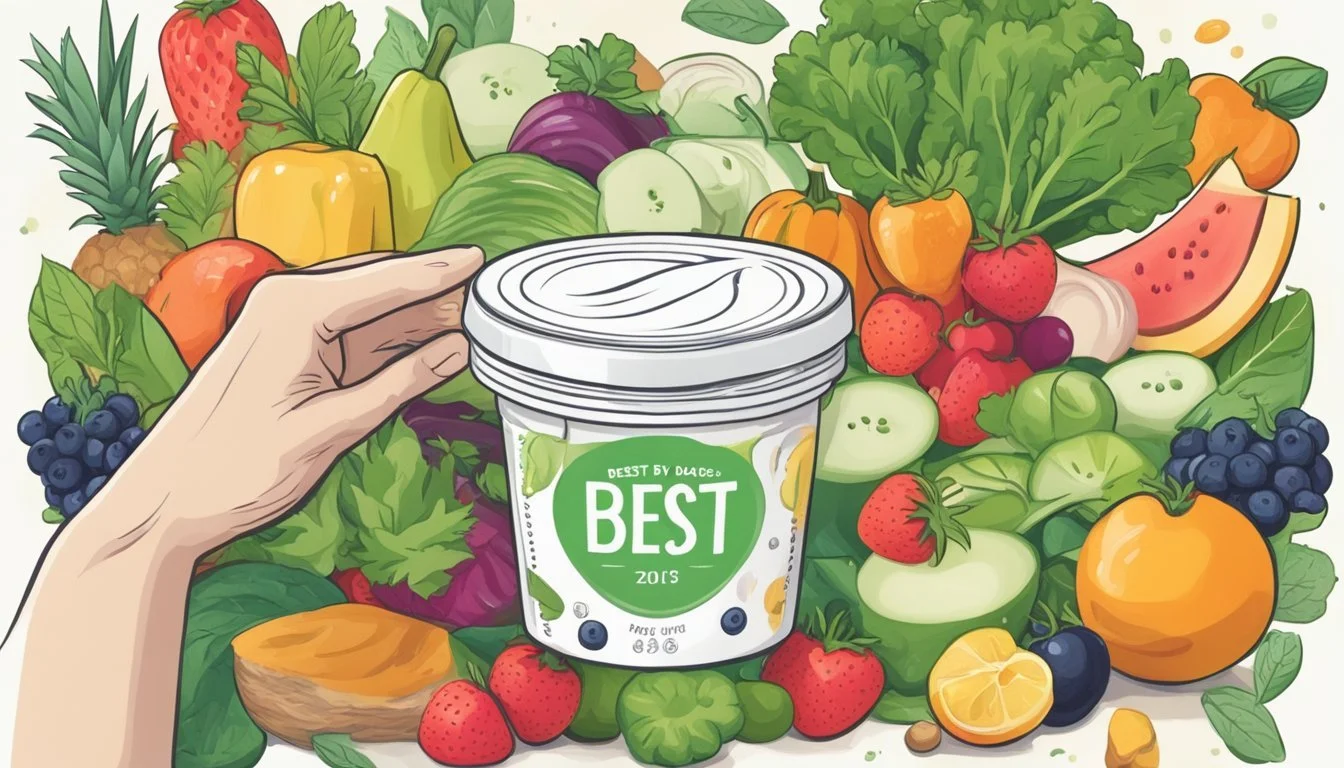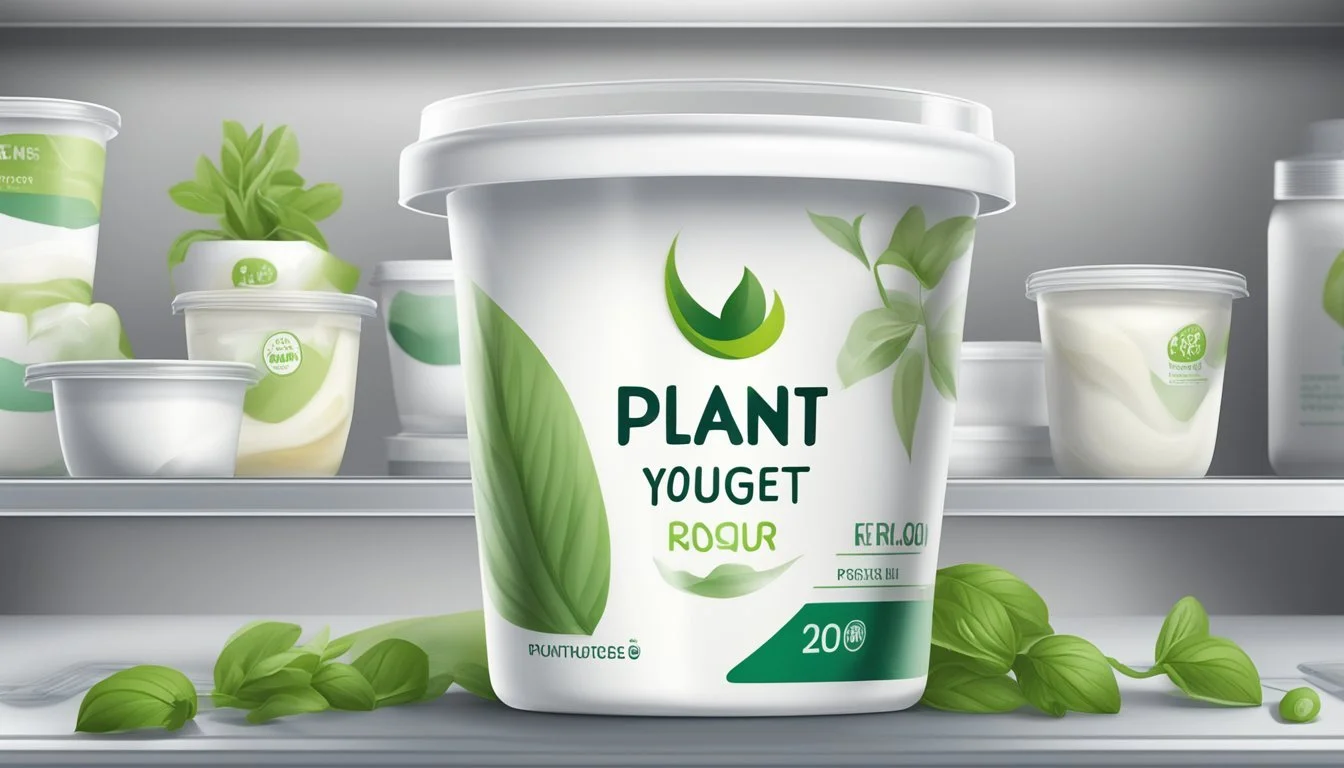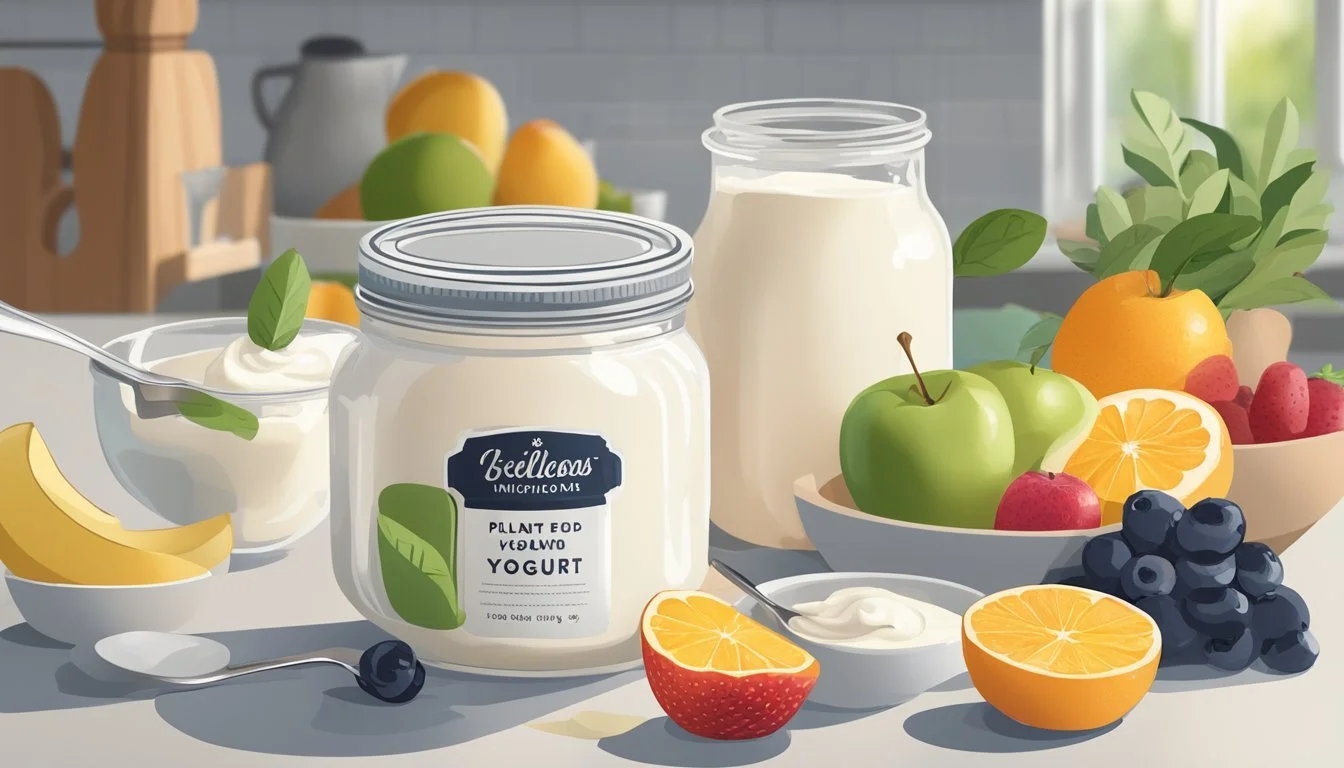How Long Does Plant-Based Yogurt Last?
Shelf Life and Storage Tips
Plant-based yogurt has become a staple in many health-conscious consumers' diets, offering a suitable alternative to traditional dairy-based yogurts. Like its dairy counterpart, plant-based yogurt's shelf life is influenced by various factors, such as storage conditions and whether the product is opened or unopened. Typically, an unopened container of plant-based yogurt will remain fresh up until the "best by" date which is usually stamped on the packaging. In most cases, it can last for an additional one to two weeks beyond this date if kept refrigerated and unopened.
Once opened, the window for enjoying plant-based yogurt at its peak quality and safety narrows. It's generally recommended that opened plant-based yogurt be consumed within five to ten days when stored properly in the refrigerator. Indicators of yogurt that has gone past its prime include a sour smell, a change in texture, or the presence of mold. It’s crucial to adhere to these guidelines to ensure both the safety and the optimal sensory experience of consuming the product.
With respect to different varieties, such as coconut-based or almond-based yogurts, the shelf life may slightly vary. Opened coconut yogurt, for instance, is noted for lasting a bit longer in the fridge—up to two to three weeks. Assessing quality by consistent refrigeration and close attention to changes in the product will best guide consumers in determining if plant-based yogurt is still good to consume.
Determining Freshness
When assessing the freshness of plant-based yogurt, one should consider several sensory and informational cues, including its smell and taste, texture and appearance, and the manufacturing dates printed on the packaging.
Smell and Taste
A fresh plant-based yogurt typically has a pleasant, mildly sour flavor, which should not be overpowering. If the yogurt emits a strong, unpleasant smell, or if it tastes distinctly sour, it may have gone bad. It's crucial to trust one's senses; if the yogurt has an off smell or taste, it should not be consumed.
Texture and Appearance
The desired texture for plant-based yogurt is usually smooth and consistent. Signs that a yogurt has spoiled include the presence of mold, curdled consistency, or the development of lumps. Any discoloration or separation of water on the surface can also indicate spoilage. These changes are visible warning signs that the yogurt may no longer be safe to eat.
Reading Labels
Plant-based yogurt containers often bear a Use-By, Best If Used By/Before, or other similar dates labeled by the manufacturers. According to federal law, expiration dates are not mandatory on yogurt, but they are commonly used by manufacturers to indicate peak freshness. One may consume yogurt beyond these dates if it passes the smell, taste, and texture checks, but caution is advised as the product's quality might decline past the labeled date.
Storage and Preservation
To ensure the longevity and safety of plant-based yogurt, one must adhere to proper storage and refrigeration practices. Freezing techniques can also play a role, especially when repurposing the yogurt for uses beyond direct consumption.
Refrigeration Practices
Plant-based yogurt should be stored in the refrigerator at a constant temperature of 40°F or below, ideally in the original container with a tight-fitting lid. This keeps out moisture and contaminants, and prevents the growth of harmful bacteria. It is crucial not to leave yogurt at room temperature for more than two hours, or one hour if the temperature is above 90°F.
Tips for Refrigeration:
Always seal the container immediately after use.
Store at the back of the fridge where temperature fluctuations are minimal.
Freezing Techniques
Although freezing plant-based yogurt might affect its texture, it can extend its shelf life significantly. To freeze yogurt:
Divide the yogurt into useable portions.
Seal in airtight containers or heavy-duty freezer bags.
Label with the freezing date.
Frozen yogurt can be used in smoothies, dips, or baked goods. To incorporate fruit, adding it to the yogurt before freezing can be convenient, especially for purposes such as smoothies or fruit on the bottom styles.
Handling and Servings
When preparing plant-based yogurt to eat or use in recipes, one should always use clean utensils to prevent introducing contaminants. If adding ingredients like fresh fruit, stir them in just before serving to maintain the best quality and taste. Repackaging any leftovers promptly and returning them to the refrigerator is also important for maintaining freshness.
Key Handling Tips:
Use clean utensils each time to scoop out yogurt.
Incorporate add-ins like frozen fruit or fruit on the bottom close to the time of consumption.
Health and Nutrition
In analyzing plant-based yogurts from a health and nutrition perspective, it is essential to consider their probiotic content, potential allergens and additives, as well as their overall nutritional profile. These factors can significantly influence the benefits associated with consuming these dairy-free alternatives.
Probiotic Content
Plant-based yogurts typically include probiotic cultures. Probiotics are live microorganisms that, when consumed in adequate amounts, confer health benefits to the host. These beneficial bacteria support gut health and can be equally efficacious in plant-based yogurts as they are in dairy products, provided they contain live and active cultures. It is important to check the label for the presence of these cultures, as not all dairy-free yogurts contain them.
Allergens and Additives
Plant-based yogurts can be a good option for people with dairy allergies or intolerances. However, they may contain other allergens, such as soy or nuts, depending on the base used (e.g., almond, soy, or coconut yogurt). Some products also contain additives and preservatives to enhance texture and shelf-life. Consumers should examine ingredient lists for additives like thickeners or sweeteners, particularly if they are looking for a product with a more natural composition.
Nutritional Profile
The nutritional content of plant-based yogurts can vary significantly between brands and types. Compared to dairy yogurts, they often have:
Protein: Lower protein content, with certain types like almond yogurt being higher in protein than others.
Sugars: They may contain less natural sugar but sometimes have higher added sugar levels.
Healthy Fats: Plant-based yogurts from sources like coconut can provide healthy fats but may also be higher in calories.
Calcium and Vitamins: Enriched versions can offer calcium and vitamin levels similar to those in dairy yogurt. It's advisable to check nutrition labels for fortified options.
In terms of carbohydrates and nutrients, plant-based yogurts can offer a healthy alternative to traditional dairy, especially for those following a vegan diet or with dairy restrictions. They can also contribute to daily intakes of calcium and vitamins if enriched. It's important for consumers to compare labels and choose yogurts that fit their nutritional needs and preferences.
Plant-Based Yogurt Varieties
Plant-based yogurts offer a wide range of tastes and qualities, with some emulating the texture and flavor of traditional dairy yogurt. Manufacturers offer various types, each with its own unique profile, while recipes for homemade versions provide opportunities for freshness and personalization.
Main Types and Brands
Soy-Based Yogurt:
Silk
So Delicious
Soy-based yogurts provide a creamy texture similar to dairy yogurt and are often enriched with probiotics.
Almond-Based Yogurt:
Kite Hill
Alpro
These yogurts tend to have a lighter texture and a nutty flavor, making them a fresh alternative to heavier options.
Coconut-Based Yogurt:
COYO
GT's Living Foods
Rich in taste with higher fat content, coconut-based yogurts offer a thicker, creamier experience.
Oat-Based Yogurt:
Oatly
Nancy's Oatmilk Yogurt
The oat-based variety is known for its environmental sustainability and naturally sweet flavor reminiscent of the oat milk it's fermented from.
Pea Protein-Based Yogurt:
Ripple
Pea protein yogurts stand out for their balanced taste and often have higher protein content, beneficial for those seeking a more substantial option.
Homemade Options
Basic Recipe:
Choose a plant milk: soy, almond, coconut, etc.
Add a thickener: agar agar, tapioca starch, or arrowroot powder.
Introduce cultures: use either commercial vegan yogurt starters or a probiotic capsule.
Creating yogurt at home allows individuals to control the taste and quality of the final product. They can ensure it is as fresh as possible and can experiment with various plant milks and fermenting times to tailor the result to their preference. Homemade versions are also free from preservatives and additives found in some commercial brands.
Food Safety Concerns
When considering the shelf life of plant-based yogurt, it is important to address potential food safety concerns that arise from spoilage and contamination, which can lead to health risks such as foodborne illness.
Identifying Spoilage
To ensure the consumption of plant-based yogurt is safe, one must be vigilant in identifying signs of spoilage. Spoiled yogurt may exhibit changes in texture, turning curdled or excessively watery. The presence of mold or an off-odor are clear indicators that yogurt has become rancid and should not be consumed. Consumers should check for these signs before eating yogurt that is past its expiration date, even though plant-based yogurt can sometimes be safe to eat after this date.
Preventing Foodborne Illness
The possibility of foodborne illness from consuming spoiled plant-based yogurt is a legitimate concern. Symptoms like diarrhea and vomiting can occur if one ingests harmful bacteria or toxins from contaminated yogurt. Following USDA guidelines helps in minimizing these risks. These include proper storage at or below 40°F (4°C), prompt refrigeration after purchase, and adherence to the "use by" date as much as possible to ensure food safety.
Impact of Preservatives
Preservatives in plant-based yogurts can extend shelf life and delay spoilage by preventing the growth of undesirable yeast and mold. It's essential to recognize that while these additives can maintain the safety and quality of yogurt, they do not make the product invulnerable to spoiling. Consumers should still practice cautious storage and handle as with preservative-free varieties to prevent contamination.
Using Yogurt in Recipes
Plant-based yogurt, a product of microbial fermentation, is a versatile ingredient that has found its way into numerous recipes. Rich in beneficial microorganisms and free from the whey and oils associated with dairy yogurt, it offers a healthier alternative for culinary use.
Breakfast and Snacks
Plant-based yogurt proves to be an excellent option for breakfast and snack times due to its nutrient-rich profile. Here are specific ways it can be incorporated:
Smoothie Bowls: A dollop of plant-based yogurt can significantly enhance the creaminess and nutritional value of smoothie bowls.
Parfaits: Layer yogurt with fruits, nuts, and grains to create a balanced and nutritious breakfast or snack parfait.
Additionally, it can serve as a substitute for dairy yogurt in any breakfast recipe, providing a similar texture without the excess dairy fat and lactose.
Culinary Creativity
The culinary applications of plant-based yogurt extend beyond the first meal of the day:
Dressings and Marinades: By combining yogurt with herbs and spices, chefs can create dressings and marinades that infuse dishes with flavor while tenderizing plant-based proteins.
Baking: It can be utilized in baking to add moisture to cakes and bread, replacing oil or eggs in many recipes.
It is imperative when using plant-based yogurt in recipes to consider its role in fermentation. It can sometimes be used to react with baking soda, helping to leaven and aerate baked goods.
Practical Tips for Consumers
When purchasing plant-based yogurt, consumers should pay close attention to storage practices and be adept at using their senses to evaluate the product's freshness.
Understanding Expiration
Use-By and Expiration Dates: Consumers should be aware of the use-by or expiration date on plant-based yogurt packaging. While non-dairy yogurt is often safe to consume up to two weeks after its use-by date when unopened, it's important to store it properly. The storage temperature should consistently be at or below 40°F in a refrigerator to maintain freshness. Once opened, one can expect the plant-based yogurt to generally last about seven to ten days in the refrigerator.
Sensory Evaluation
Use Senses to Assess Quality: A consumer can determine the freshness of plant-based yogurt using their senses. If the yogurt exhibits an off smell, odor, or significant changes in texture, including excess liquid on top or curdling, it may be a sign of spoilage. Also, any visible mold means the yogurt should be discarded. A slight increase in sugar content may occur as yogurt ages, influencing its taste. However, an overly tart taste may suggest over-fermentation. The balance here is crucial as plant-based yogurts do not contain lactose, which influences the sweet and tart flavor profile in dairy yogurts.
Smell: Check for any unusual or strong odors.
Texture: Look for the consistent creaminess rather than lumps.
Sight: Observe the color and note any presence of mold or excessive separation of liquid.
Taste: A slight tartness is normal, but overly sour taste can indicate spoilage.









